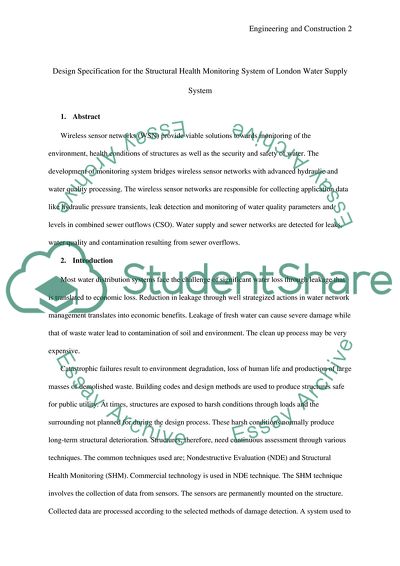Cite this document
(Design Specification for the Structural Health Monitoring System of Case Study Example | Topics and Well Written Essays - 2250 words, n.d.)
Design Specification for the Structural Health Monitoring System of Case Study Example | Topics and Well Written Essays - 2250 words. https://studentshare.org/engineering-and-construction/1768337-design-specification-for-the-structural-health-monitoring-system-of-london-water-supply-system
Design Specification for the Structural Health Monitoring System of Case Study Example | Topics and Well Written Essays - 2250 words. https://studentshare.org/engineering-and-construction/1768337-design-specification-for-the-structural-health-monitoring-system-of-london-water-supply-system
(Design Specification for the Structural Health Monitoring System of Case Study Example | Topics and Well Written Essays - 2250 Words)
Design Specification for the Structural Health Monitoring System of Case Study Example | Topics and Well Written Essays - 2250 Words. https://studentshare.org/engineering-and-construction/1768337-design-specification-for-the-structural-health-monitoring-system-of-london-water-supply-system.
Design Specification for the Structural Health Monitoring System of Case Study Example | Topics and Well Written Essays - 2250 Words. https://studentshare.org/engineering-and-construction/1768337-design-specification-for-the-structural-health-monitoring-system-of-london-water-supply-system.
“Design Specification for the Structural Health Monitoring System of Case Study Example | Topics and Well Written Essays - 2250 Words”. https://studentshare.org/engineering-and-construction/1768337-design-specification-for-the-structural-health-monitoring-system-of-london-water-supply-system.


